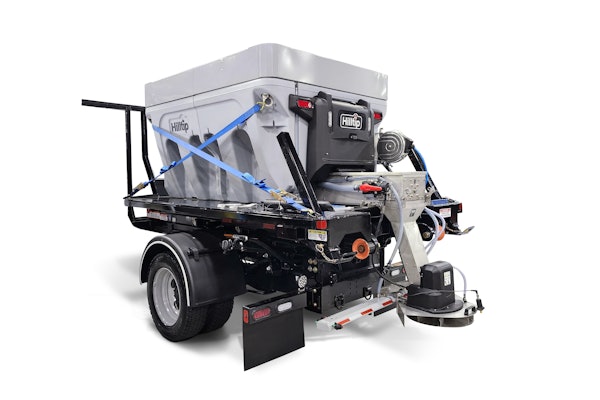While concrete products have a great price point, homeowners are reawakening to the value of traditional walkway materials, says Lucian Kowalski, landscape architect and project manager for Bolton & Associates in LaPlata, Maryland.
Kowalski’s clients are increasingly willing to pay for brick and other natural paving materials such as bluestone, slate, fieldstone and riverjacks. Many of them purchased their homes in the 1980s and are upgrading their landscapes now that their mortgages are paid down, Kowalski says. Most choose to replace concrete pavers and other concrete products with more expensive materials.
Quality, style and ROI
The reasoning behind this trend is three-pronged. The quality and longevity of stone and kiln-fired brick is one factor. Despite its reputation for permanence, concrete can’t hold a candle to bluestone that’s been compressed inside the earth for millions of years. The stone resists cracking and won’t discolor. “It’s not going to change,” Kowalski says.
Clay pavers spend about 36 hours curing in a 2,000-degree kiln. “There’s really nothing Mother Nature can throw at it to top that,” says Laura Schwind, a landscape architect for Pine Hall Brick. “It will look as good 50 years from now as it does the day it’s installed.”
Compared with stone and brick, concrete and concrete pavers are soft and easily break or chip, Kowalski says. The pavers also stain quickly – a situation that worsens if someone cleans them with a pressure washer.
Walkways made of traditional materials also fit the overall look homeowners are trying to achieve. Designs reminiscent of old English gardens and 19th-century European styles are popular, Kowalski says.
And finally, new market research about landscaping investment returns is giving homeowners the confidence to spend more. According to the American Society of Landscape Architects and Money magazine, homeowners recoup 100 percent to 200 percent of landscaping costs when they sell their properties. Kowalski says landscapes with concrete-paver walkways and other concrete elements are adding 8 percent to 13 percent to the value of homes in his area. His clients with natural landscaping materials are able to tack 18 to 20 percent on their homes’ sale price. So if a home is worth $1 million, the landscaping would be worth $180,000 to $200,000.
Jeff Scott, head of marketing and sales for Glen Gate Company in Wilton, Connecticut, says his clients who can afford natural materials are going that direction, too. A conservative, formal style is in vogue with upper-end customers, and it calls for bluestone, slate, brick or granite walkways, he says.
With recent economic hiccups, these homeowners tended to spend more or less on masonry, but didn’t abandon traditional materials, Scott says. Economic dips prompted them to select a stone base for their walkways rather than a concrete pad or fieldstone instead of bluestone. Many also elected to slope their lawns so they could avoid stairs and walls required for dramatic grade changes.
Construction techniques
In addition to using tumbled brick, mimicking the patterns used in historic cobblestone is becoming a popular way to capture the sought-after look of bygone eras, Schwind says. The patterns can be intricate and haven’t been used much in recent decades because installation is labor intensive. But as homeowners remodel instead of sell or attempt to set their home apart in a sluggish housing market, the patterns are being pulled back into play, Schwind says. “They’re really putting a lot more into their landscapes,” she says. “They’re trying to get a little more pop.”
If you’re interested in creating historic patterns, Schwind recommends the book “Brick Pavement” by landscape designer Peter Joel Harrison. It offers photos and diagrams of brick patterns from early American cities, along with instructions for installing them.
Giving stone walkways an authentic, been-there-for-years appearance also involves extra work. Kowalski says his clients want a concrete base for their walkways, but they don’t want to fit a business card in the joints between irregular stone. He had masons on staff at Capability Brown, a Saddle River, New Jersey, landscaping company he recently sold, to build walkways with 98 percent stone and 2 percent concrete since concrete joints didn’t exist in the 1800s.
Schwind says walkways in general are getting wider – 4 or 5 feet compared to the usual 3 feet – so people can walk side by side or pass each other going opposite directions.
A movement toward more walkways is taking shape as well. “We’re just seeing a whole lot more walkways than the one from the driveway to the front door,” Schwind says.
If there’s a backyard garden around the corner from a driveway, Kowalski says he uses a walkway to direct visitors to it. He designs his landscapes as a series of rooms and says the walkway is the backbone that ties the rooms and features together. “I want to give people a bit of eye candy to pull them through the landscape, and the walkway does that,” he says.







